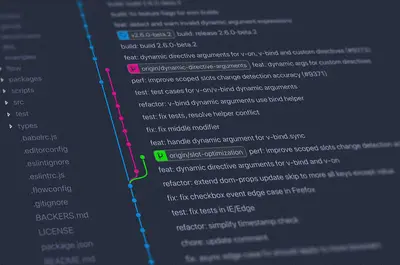⌨️ AlmaLinux Terminal Shortcuts: Productivity Commands Guide
Ready to become a terminal ninja? 🥷 Learning keyboard shortcuts and productivity commands transforms you from a slow clicker into a lightning-fast Linux user! This complete guide reveals the secret shortcuts, powerful aliases, and time-saving techniques that professionals use daily. From basic navigation to advanced automation, let’s supercharge your AlmaLinux terminal skills! ⚡
🤔 Why Terminal Shortcuts Matter?
Terminal shortcuts are the secret to Linux mastery! 🌟 Here’s why every user needs them:
- ⚡ Lightning Speed: Execute commands 10x faster than GUI
- 🧠 Mental Flow: Keep focus without breaking concentration
- 💪 Power User Status: Impress colleagues with terminal wizardry
- 🔄 Repetitive Tasks: Automate boring, repetitive work
- 📱 Universal Skills: Work on any Linux system efficiently
- 🎯 Precision Control: Exact control over system operations
- 🏃 Workflow Acceleration: Chain complex operations seamlessly
- 🛡️ Emergency Skills: Fix systems when GUI fails
Master these shortcuts and join the terminal elite! 🏆
🎯 What You Need
Let’s prepare for terminal mastery! ✅
- ✅ AlmaLinux system with terminal access
- ✅ Basic familiarity with command line
- ✅ Willingness to practice new shortcuts
- ✅ 30 minutes to learn the essentials
- ✅ Patience to build muscle memory
- ✅ Excitement about increased productivity
- ✅ Understanding that practice makes perfect
- ✅ Ready to become a keyboard warrior! 🎉
Let’s unlock terminal superpowers! 🌍
📝 Step 1: Essential Navigation Shortcuts
Master movement and navigation like a pro! 🎯
Cursor Movement (The Foundation):
# Line navigation shortcuts:
Ctrl+A # Move to beginning of line
Ctrl+E # Move to end of line
Alt+B # Move backward one word
Alt+F # Move forward one word
Ctrl+B # Move backward one character
Ctrl+F # Move forward one character
# Example usage:
$ sudo systemctl restart networkd[cursor here]
# Press Ctrl+A to jump to beginning:
$ [cursor]sudo systemctl restart networkd
# Press Ctrl+E to jump to end:
$ sudo systemctl restart networkd[cursor]
# Word navigation example:
$ find /var/log -name "*.log" -mtime -7
# Alt+B moves: find /var/log -name "*.log" -[cursor]mtime -7
# Alt+F moves: find /var/log -name "*.log" -mtime [-7cursor]Text Editing Shortcuts:
# Deletion shortcuts:
Ctrl+H # Delete character before cursor (backspace)
Ctrl+D # Delete character after cursor
Ctrl+W # Delete word before cursor
Alt+D # Delete word after cursor
Ctrl+U # Delete from cursor to beginning of line
Ctrl+K # Delete from cursor to end of line
# Real-world examples:
$ sudo dnf install package-that-has-wrong-name
# Need to fix "package-that-has-wrong-name":
# Position cursor after "package-", then:
# Ctrl+K deletes rest of line
$ sudo dnf install package-[cursor deleted rest]
# Want to fix command quickly:
$ cd /very/long/path/to/wrong/directory
# Ctrl+W removes "directory", Ctrl+W removes "wrong/"
$ cd /very/long/path/to/[cursor]Copy, Cut, and Paste:
# Text manipulation:
Ctrl+C # Copy selected text (if text selected)
Ctrl+X # Cut selected text
Ctrl+V # Paste text
Ctrl+Shift+C # Copy (in most terminals)
Ctrl+Shift+V # Paste (in most terminals)
# Kill ring (advanced copy/paste):
Ctrl+Y # Paste (yank) last killed text
Alt+Y # Cycle through kill ring after Ctrl+Y
# Example workflow:
$ echo "This is a long command with many parameters"
# Select "long command" with mouse, Ctrl+Shift+C
$ vim filename
# In vim, press i for insert mode, Ctrl+Shift+V to pastePerfect! 🎉 Navigation mastery achieved!
🔧 Step 2: Command History Shortcuts
Unleash the power of command history! 📦
History Navigation:
# Basic history shortcuts:
Ctrl+P # Previous command (same as Up arrow)
Ctrl+N # Next command (same as Down arrow)
Ctrl+R # Reverse search through history
Ctrl+S # Forward search (if enabled)
Alt+< # Go to first command in history
Alt+> # Go to last command in history
# Reverse search examples:
# Press Ctrl+R, then type:
(reverse-i-search)`sys`: systemctl restart nginx
# Type more to narrow search:
(reverse-i-search)`syst`: systemctl status nginx
# Press Enter to execute, or Ctrl+R again for next matchAdvanced History Usage:
# History expansion shortcuts:
!! # Repeat last command
!n # Repeat command number n
!string # Repeat last command starting with string
!?string? # Repeat last command containing string
^old^new # Replace 'old' with 'new' in last command
# Practical examples:
$ systemctl status nginx # Check service status
$ sudo !! # Runs: sudo systemctl status nginx
$ ls -la /var/log
$ !ls # Repeats: ls -la /var/log
$ systemctl restart nginx # Typo - forgot sudo
$ ^systemctl^sudo systemctl # Runs: sudo systemctl restart nginx
# Word designators:
!!:0 # Command name from last command
!!:1 # First argument from last command
!!:$ # Last argument from last command
!!:* # All arguments from last command
# Example:
$ ls -la /var/log/nginx/error.log
$ vim !!:$ # Opens: vim /var/log/nginx/error.logHistory Search and Modification:
# Interactive history search:
# Press Ctrl+R and type search term
# Use these while in search mode:
Ctrl+R # Find next match backwards
Ctrl+S # Find next match forwards
Ctrl+G # Cancel search
Enter # Execute found command
Tab # Edit found command
# History commands:
history # Show all command history
history 10 # Show last 10 commands
history | grep sudo # Find all sudo commands
!123 # Execute command #123 from history
# Clear history:
history -c # Clear current session history
history -w # Write history to file
> ~/.bash_history # Clear history fileAmazing! 🌟 History navigation unlocked!
🌟 Step 3: Process Control Shortcuts
Master job control and process management! ⚡
Process Control:
# Essential process shortcuts:
Ctrl+C # Terminate current process (SIGINT)
Ctrl+Z # Suspend current process (SIGTSTP)
Ctrl+D # Send EOF / exit shell
Ctrl+\ # Force quit (SIGQUIT)
# Job control workflow:
$ ping google.com # Start long-running command
# Press Ctrl+Z to suspend:
[1]+ Stopped ping google.com
$ jobs # List background jobs
[1]+ Stopped ping google.com
$ bg %1 # Resume job 1 in background
[1]+ ping google.com &
$ fg %1 # Bring job 1 to foreground
$ kill %1 # Kill job 1Background Process Management:
# Running commands in background:
command & # Run command in background
nohup command & # Run command immune to hangups
disown # Remove job from job table
# Example workflow:
$ firefox & # Start Firefox in background
[1] 12345 # Job number and PID shown
$ nohup ./long_script.sh & # Run script in background
nohup: ignoring input and appending output to 'nohup.out'
$ jobs # Check running jobs
[1]- Running firefox &
[2]+ Running nohup ./long_script.sh &
$ disown %1 # Remove Firefox from job control
$ exit # Firefox continues running after logoutScreen and Terminal Management:
# Terminal shortcuts:
Ctrl+L # Clear screen (same as 'clear' command)
Ctrl+S # Pause terminal output (XOFF)
Ctrl+Q # Resume terminal output (XON)
Ctrl+Alt+T # Open new terminal (in most desktop environments)
# Screen session management:
screen # Start new screen session
screen -S name # Start named screen session
Ctrl+A, D # Detach from screen
screen -r # Reattach to screen
screen -ls # List screen sessions
# Tmux session management:
tmux # Start new tmux session
tmux new -s name # Start named session
Ctrl+B, D # Detach from tmux
tmux attach # Reattach to tmux
tmux ls # List tmux sessionsExcellent! ⚡ Process control mastered!
✅ Step 4: Advanced Terminal Tricks
Professional-level shortcuts and techniques! 🔧
Tab Completion Magic:
# Basic tab completion:
Tab # Complete command/filename
Tab Tab # Show all possible completions
# Advanced completion examples:
$ sudo systemctl [Tab][Tab]
# Shows all systemctl subcommands:
disable enable restart start status stop reload...
$ cd /var/lo[Tab]
# Completes to: cd /var/log/
$ ls ~/Doc[Tab]
# Completes to: ls ~/Documents/
# Complete with variables:
$ echo $PA[Tab]
# Completes to: echo $PATH
# SSH completion (if configured):
$ ssh user@[Tab][Tab]
# Shows known hosts from ~/.ssh/known_hostsCommand Substitution and Pipes:
# Command substitution shortcuts:
$(command) # Modern command substitution
`command` # Old-style command substitution (backticks)
# Practical examples:
$ cd $(dirname $(which nginx)) # Go to nginx binary directory
$ vim $(find . -name "*.conf" | head -1) # Edit first .conf file found
# Quick command chaining:
$ command1 && command2 # Run command2 if command1 succeeds
$ command1 || command2 # Run command2 if command1 fails
$ command1; command2 # Run command2 regardless
# Real-world examples:
$ make && make install # Compile and install if compilation succeeds
$ ping -c1 google.com && echo "Internet OK" || echo "No internet"
$ systemctl stop nginx; systemctl start nginx # Restart serviceInput/Output Redirection Shortcuts:
# Redirection shortcuts:
> # Redirect stdout to file (overwrite)
>> # Redirect stdout to file (append)
2> # Redirect stderr to file
2>&1 # Redirect stderr to stdout
&> # Redirect both stdout and stderr
| # Pipe output to next command
# Practical redirection:
$ ls /nonexistent 2> /dev/null # Hide error messages
$ command > output.txt 2>&1 # Save both output and errors
$ { echo "Log entry"; date; } >> logfile.txt # Append multiple lines
# Here documents and strings:
cat << EOF > config.txt
server {
listen 80;
server_name example.com;
}
EOF
# Quick file creation:
$ cat > newfile.txt << 'EOF'
Line 1
Line 2
EOFBrace Expansion and Globbing:
# Brace expansion magic:
{a,b,c} # Expands to: a b c
{1..10} # Expands to: 1 2 3 4 5 6 7 8 9 10
{a..z} # Expands to: a b c ... x y z
# Practical examples:
$ mkdir -p project/{src,docs,tests,build} # Create project structure
$ cp file.txt{,.backup} # Copy file.txt to file.txt.backup
$ mv config.{old,new} # Rename config.old to config.new
# Glob patterns:
* # Matches any string
? # Matches any single character
[abc] # Matches a, b, or c
[a-z] # Matches any lowercase letter
[!abc] # Matches anything except a, b, or c
# Examples:
$ ls *.log # All .log files
$ rm temp? # temp1, temp2, etc.
$ ls [A-Z]* # Files starting with uppercase
$ find . -name "*.[ch]" # .c and .h filesPerfect! 🏆 Advanced tricks unlocked!
🎮 Quick Examples
Real-world productivity scenarios! 🎯
Example 1: System Administration Workflow
# Scenario: Check and restart services efficiently
# Traditional slow method vs. shortcuts
# SLOW WAY (clicking and typing everything):
# 1. Open terminal
# 2. Type: sudo systemctl status nginx
# 3. Check if running
# 4. Type: sudo systemctl restart nginx
# 5. Type: sudo systemctl status nginx again
# FAST WAY (using shortcuts):
$ sudo systemctl status nginx
# Service is down, need to restart
$ !! # Repeat last command to check again
$ ^status^restart # Change 'status' to 'restart'
$ !! # Check status again with same command
# Even faster with aliases:
alias sst='sudo systemctl status'
alias srs='sudo systemctl restart'
alias ssr='sudo systemctl reload'
$ sst nginx # Check status
$ srs nginx # Restart service
$ sst nginx # Verify restart
# Power user combo:
$ srs nginx && sst nginx # Restart and immediately check statusExample 2: Log File Investigation
# Scenario: Investigate server issues in log files
# Efficient log analysis workflow
# Quick log access aliases:
alias logs='cd /var/log'
alias nginx-error='tail -f /var/log/nginx/error.log'
alias nginx-access='tail -f /var/log/nginx/access.log'
alias syslog='tail -f /var/log/messages'
# Investigation workflow:
$ logs # Go to log directory
$ ls -lt | head # See most recent logs
$ tail -n 100 messages | grep -i error # Find recent errors
# Using history and shortcuts:
$ grep -i "500 error" nginx/access.log
# Found errors, now check around that time:
$ !! # Repeat last grep
# Want to see more context:
$ grep -i -A5 -B5 "500 error" nginx/access.log
# Quick timestamp filtering:
$ awk '/Jan 15 14:/' nginx/access.log | grep "500"
# Check what happened before:
$ awk '/Jan 15 13:/ && /Jan 15 14:/' nginx/access.log
# Multi-log investigation:
$ { echo "=== Error Log ==="; tail -20 nginx/error.log; echo "=== Access Log ==="; tail -20 nginx/access.log; } | lessExample 3: Development Environment Setup
# Scenario: Set up development environment quickly
# Using shortcuts and automation
# Quick project navigation:
alias proj='cd ~/Projects'
alias active='cd ~/Projects/Active'
alias web='cd ~/Projects/Web'
# Development shortcuts:
alias ll='ls -alF'
alias la='ls -A'
alias l='ls -CF'
alias ..='cd ..'
alias ...='cd ../..'
alias ....='cd ../../..'
# Git shortcuts:
alias gs='git status'
alias ga='git add'
alias gc='git commit'
alias gp='git push'
alias gl='git log --oneline -10'
# Development workflow:
$ proj # Go to projects directory
$ ls -lt | head # See recent projects
$ cd myproject # Enter project
$ gs # Check git status
# Quick file editing:
$ find . -name "*.js" | head -5 # Find JavaScript files
$ vim $(find . -name "app.js") # Edit main app file
# Testing and building:
$ npm test && npm run build # Test and build if tests pass
$ !! # Repeat if needed
# Port and process management:
$ lsof -i :3000 # Check what's using port 3000
$ kill $(lsof -t -i :3000) # Kill process using port 3000
$ npm start & # Start development server in backgroundExample 4: File Management and Organization
# Scenario: Organize and clean up directories efficiently
# Batch operations using shortcuts
# Quick directory creation:
$ mkdir -p Archive/{2023,2024,2025}/{Q1,Q2,Q3,Q4}
# Creates organized year/quarter structure
# File organization aliases:
alias organize='~/bin/organize_files.sh'
alias cleanup='find . -name "*.tmp" -delete && find . -name "*~" -delete'
alias backup='rsync -av --progress'
# Quick file operations:
$ ls -la | grep "^-" | wc -l # Count files in directory
$ du -sh * | sort -hr # Show directory sizes, largest first
# Batch file processing:
$ for file in *.txt; do mv "$file" "${file%.txt}.backup"; done
# Rename all .txt files to .backup
# Quick archive creation:
$ tar -czf backup_$(date +%Y%m%d).tar.gz important_files/
$ ls -lh *.tar.gz # Check archive sizes
# Permission fixing:
$ find . -type f -exec chmod 644 {} \; # Fix file permissions
$ find . -type d -exec chmod 755 {} \; # Fix directory permissions
# Quick search and replace in files:
$ grep -rl "old_text" . | xargs sed -i 's/old_text/new_text/g'
# Find and replace text in all filesExample 5: Network and System Monitoring
# Scenario: Monitor system performance and network
# Quick diagnostic commands with shortcuts
# System monitoring aliases:
alias cpu='top -bn1 | grep "Cpu(s)" | sed "s/.*, *\([0-9.]*\)%* id.*/\1/" | awk "{print 100 - \$1}"'
alias mem='free -h'
alias disk='df -h'
alias net='ss -tuln'
# Network diagnostics:
alias ping8='ping 8.8.8.8'
alias ports='netstat -tuln'
alias listening='ss -tuln | grep LISTEN'
# Quick system checks:
$ cpu && mem && disk # Check CPU, memory, and disk
# Chain with logical operators:
$ ping8 -c1 && echo "Internet OK" || echo "No internet connection"
# Process monitoring:
$ ps aux | grep nginx # Find nginx processes
$ kill $(ps aux | grep 'nginx: worker' | awk '{print $2}') # Kill worker processes
# Log monitoring with shortcuts:
$ tail -f /var/log/messages & # Monitor system log in background
$ jobs # Check background jobs
$ fg %1 # Bring log monitoring to foreground
# Quick service status checks:
$ for service in nginx mysql ssh; do echo -n "$service: "; systemctl is-active $service; done
# Output: nginx: active, mysql: inactive, ssh: active
# Network connection monitoring:
$ watch -n 2 'ss -tuln | grep :80' # Monitor port 80 connections every 2 seconds🚨 Fix Common Problems
Terminal productivity troubleshooting! 🔧
Problem 1: Shortcuts Not Working
Solution:
# Check terminal emulator:
# Some terminals have different default shortcuts
# For GNOME Terminal:
Edit → Preferences → Shortcuts
# Look for conflicts with:
- Copy: Ctrl+Shift+C
- Paste: Ctrl+Shift+V
- Find: Ctrl+Shift+F
# Check if readline is working:
$ set | grep -i keymap
# Should show readline key bindings
# Reset readline to defaults:
$ bind -f ~/.inputrc # If you have custom inputrc
$ bind '\C-a: beginning-of-line' # Manually set Ctrl+A
# Check shell compatibility:
$ echo $SHELL # Should show /bin/bash
$ bash --version # Check bash version
# If using zsh:
$ autoload -U bashcompinit && bashcompinit # Enable bash completionsProblem 2: History Search Not Working
Solution:
# Check history settings:
$ echo $HISTSIZE # Should be a number (default 1000)
$ echo $HISTFILESIZE # Should be a number (default 2000)
# Enable history search if disabled:
$ stty start undef # Disable Ctrl+S (XON/XOFF)
$ stty stop undef # Disable Ctrl+Q
# Fix history file:
$ ls -la ~/.bash_history # Check if file exists
$ chmod 600 ~/.bash_history # Fix permissions
# Add to ~/.bashrc:
export HISTCONTROL=ignoredups:erasedups
export HISTSIZE=10000
export HISTFILESIZE=20000
shopt -s histappend # Append to history, don't overwrite
# Reload bash configuration:
$ source ~/.bashrc
# If Ctrl+R still doesn't work:
$ bind '\C-r: reverse-search-history'Problem 3: Tab Completion Not Working
Solution:
# Check if bash completion is installed:
$ rpm -qa | grep bash-completion
# If not installed:
$ sudo dnf install bash-completion
# Enable bash completion in ~/.bashrc:
if [ -f /etc/bash_completion ]; then
. /etc/bash_completion
fi
# Or for newer systems:
if [ -f /usr/share/bash-completion/bash_completion ]; then
. /usr/share/bash-completion/bash_completion
fi
# Check completion settings:
$ complete | head -10 # Show some completions
$ complete -p git # Check git completion
# Reset completions:
$ complete -r # Remove all completions
$ source /etc/bash_completion # Reload completions
# For specific commands:
$ sudo dnf install bash-completion-extras
# Provides completions for many additional commandsProblem 4: Aliases Not Persisting
Solution:
# Check where aliases should be defined:
$ ls -la ~/.bashrc ~/.bash_profile ~/.profile
# Add aliases to correct file (usually ~/.bashrc):
$ echo "alias ll='ls -alF'" >> ~/.bashrc
$ echo "alias la='ls -A'" >> ~/.bashrc
$ echo "alias l='ls -CF'" >> ~/.bashrc
# Reload configuration:
$ source ~/.bashrc
# Check if aliases are loaded:
$ alias # Show all aliases
$ alias ll # Show specific alias
# For system-wide aliases:
$ sudo nano /etc/bashrc # Add aliases for all users
# Debug alias loading:
$ bash -x # Start bash with debugging
# Then source your config to see what's happening
# Alternative: use functions instead of aliases:
ll() { ls -alF "$@"; }
export -f ll # Make function available to subshells📋 Essential Shortcuts Summary
| Category | Shortcut | Action |
|---|---|---|
| Navigation | Ctrl+A | Beginning of line |
| Navigation | Ctrl+E | End of line |
| Navigation | Alt+B | Back one word |
| Navigation | Alt+F | Forward one word |
| Editing | Ctrl+W | Delete word before cursor |
| Editing | Ctrl+K | Delete to end of line |
| Editing | Ctrl+U | Delete to beginning of line |
| History | Ctrl+R | Reverse search history |
| History | !! | Repeat last command |
| Process | Ctrl+C | Terminate process |
| Process | Ctrl+Z | Suspend process |
| Terminal | Ctrl+L | Clear screen |
💡 Tips for Success
Master terminal shortcuts like a professional! 🌟
- 🧠 Muscle Memory: Practice shortcuts daily until automatic
- 📝 Custom Aliases: Create shortcuts for your most-used commands
- ⌨️ Keyboard Focus: Keep hands on keyboard, avoid mouse when possible
- 🔄 Incremental Learning: Add 2-3 new shortcuts each week
- 📚 Cheat Sheets: Keep reference handy until memorized
- 🎯 Context Practice: Use shortcuts in real work scenarios
- 🤝 Share Knowledge: Teach shortcuts to colleagues
- 📊 Track Progress: Notice time savings from shortcut usage
- 🔧 Customize Environment: Tailor shortcuts to your workflow
- 🚀 Advanced Features: Explore readline and shell-specific features
🏆 What You Learned
Congratulations! You’re now a terminal productivity expert! 🎉
- ✅ Mastered essential navigation and editing shortcuts
- ✅ Conquered command history search and manipulation
- ✅ Learned advanced process control techniques
- ✅ Created powerful aliases and custom shortcuts
- ✅ Built real-world productivity workflows
- ✅ Solved common terminal shortcut problems
- ✅ Gained professional-level terminal efficiency
- ✅ Unlocked the secrets of terminal ninjas!
🎯 Why This Matters
Your terminal mastery transforms daily computing! 🚀
- ⚡ Speed Multiplication: Execute commands 10x faster
- 💼 Professional Edge: Stand out as efficient power user
- 🧠 Cognitive Flow: Maintain focus without interruption
- 🎯 Precision Control: Exact, repeatable operations
- 🔧 Problem Solving: Fix issues faster with quick access
- 🌟 Career Value: Essential skill for any technical role
- 📈 Productivity Gains: Hours saved weekly through efficiency
- 🥷 Terminal Ninja Status: Join the elite keyboard warriors
You now possess the keyboard shortcuts of Linux legends! 🏆
Type fast, think faster! 🙌




